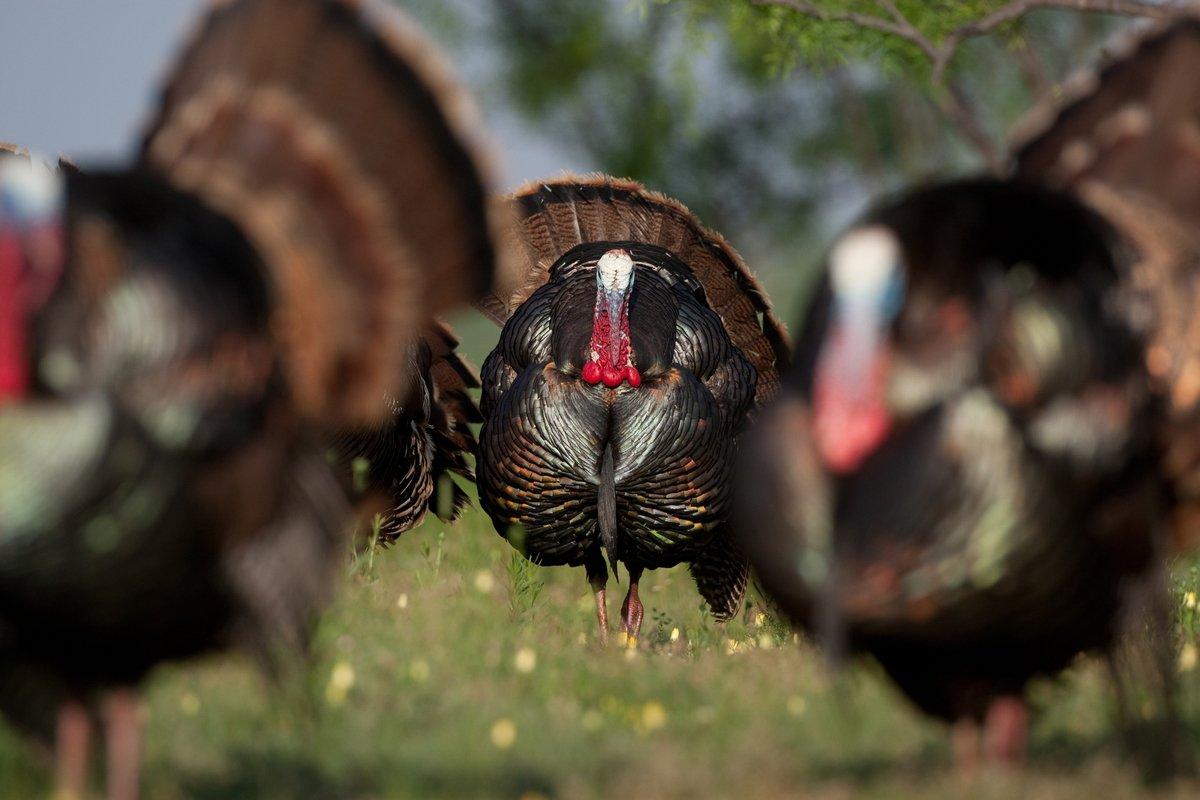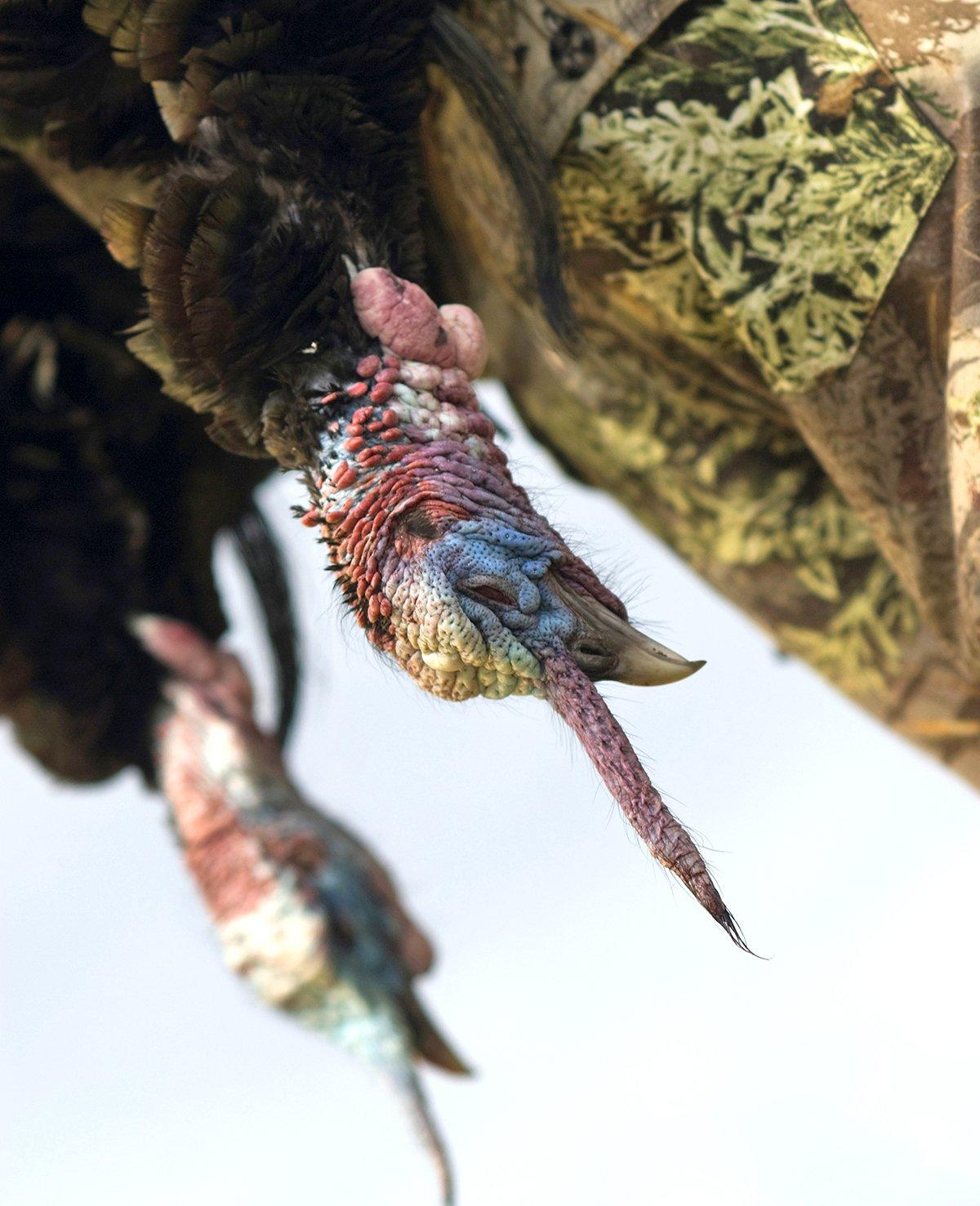It Ain't Over Until It's Over
At first, it seems like a perfect hunting scenario: you find several gobblers or more running together. Not a single hen is yelping in hearing distance. And you haven't seen one in days.
But wait.
It's late in the spring turkey season. Your hen clucks and yelps now echo along pasture edges, on mountain ridges and in swamp bottoms - those gobblers simply won't come. When they do, it's only half the distance. They want some evidence.
Sometimes, too, late-season male turkeys just want to hang with other gobblers.
Yep, hens have surely disappeared and are likely nesting. Days are heating up. Gobblers travel together again. Some, sure enough, are still driven to find hens; still others form all-male turkey groups, or will soon, and stay this way through summer and autumn.
But you've still got a turkey tag to fill. How can you do it?
Tip 1: Gobbler Yelps
Often, late in the game, a longbeard will run with a young gobbler. The jake is a kind of sentry, moving ahead of the mature bird.
Your waning spring hunt might now do better with some fall turkey calling tactics.
Soft-selling gobbler yelps can interest late-season male spring turkeys just as these calls do in autumn. This call is deeper with a slower cadence - yawp-yawp-yawp - than faster, higher-pitched hen yelps. Make it and keep your eyes and ears open for an approaching red head or two bobbing through the greened-up woods.
A gobbler decoy or two might seal the deal as turkeys look your way on the approach. It's likely best to avoid this option on hard-hunted public land though.
Here they come. Wait, wait . . . Now pick out your bird.
Tip 2: The Silent Treatment
How can you tell when shut-mouthed, late-season male turkeys are coming your way?
Sounds you should listen for when hunting non-gobbling turkeys follow, and how you can respond.
Footsteps: It can happen fast. You hear (or don't hear) footsteps in the leaves. It might be those gobblers you located, checking out your position, looking for the hen you just imitated. Key on these sounds, while also being safe - turkeys and hunters walking make similar noises at times. Always identify your target.
Clucking: It might just be a single cluck: pock. Still if you hear it, you'll be ready for that turkey to appear. Or you can cluck back. And you can reposition if the gobbler clucked and moved off.
Spitting and drumming: While the gobble is easy to distinguish, some hunters can't or don't know what to listen for when it comes to the pfft-dummmm sound of a strutting gobbler. This might be one of the only sounds you hear as late-season birds come to your setup.
Bird and animal noises: Squirrels barking and chittering, blue jays screeching and crows cawing wildly can key you into wild turkey movements in your direction. I've killed a gobbler or two this way when other wildlife let me know turkeys were coming.
Listen up. Stay aware. Identify your target. Now take your shot.
Tip 3: Change Calling Setups
Got a few hung-up gobblers that won't budge?
They're sure enough easy to see and hear - loud and proud on the roost. When they fly down, things change. They'll only come so far. Hunt these birds on successive days and you'll likely notice they have a line in the sand they won't cross. They want you to go to them.
It's clear you're in a stand-off situation: they won't move and you can't slip closer, so do the opposite.
Walk in the other direction, softly calling as you ease away. Be the fickle hen. With any luck the gobblers will panic, move closer. The trick now is to remain undetected, using terrain to hide your movements, as you ease back toward the interested turkeys.
Your buddy can also drop back and call. Make sure they do it in line with your setup and the gobblers hung-up in front of you. Otherwise the birds might move past your spot, out of range.
Sometimes this last-ditch effort will have turkeys slide closer. Sometimes not. That's the way it is with late-season gobblers running together. It's all good, even when those tough birds walk into summer and leave you with an unfilled tag.
Go here for more Realtree turkey hunting tips. Find us on Facebook.
(Editor's note: This article was first published on May 16, 2016.)








